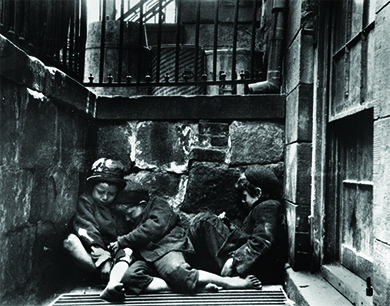THE MUCKRAKERS
A group of journalists and writers collectively known as muckrakers provided an important spark that ignited the Progressive movement. Unlike the “yellow journalists” who were interested only in sensationalized articles designed to sell newspapers, muckrakers exposed problems in American society and urged the public to identify solutions. Whether those problems were associated with corrupt machine politics, poor working conditions in factories, or the questionable living conditions of the working class (among others), muckrakers shined a light on the problem and provoked outraged responses from Americans. President Theodore Roosevelt knew many of these investigative journalists well and considered himself a Progressive. Yet, unhappy with the way they forced agendas into national politics, he was the one who first gave them the disparaging nickname “muckrakers,” invoking an ill-spirited character obsessed with filth from The Pilgrim’s Progress, a 1678 Christian allegory written by John Bunyan.
Beginning in the second half of the nineteenth century, these Progressive journalists sought to expose critical social problems and exhort the public to take action. In his book, How the Other Half Lives (1890), journalist and photographer Jacob Riis used photojournalism to capture the dismal and dangerous living conditions in working-class tenements in New York City (Figure). Ida Tarbell, perhaps the most well-known female muckraker, wrote a series of articles on the dangers of John D. Rockefeller’s powerful monopoly, Standard Oil. Her articles followed Henry Demarest Lloyd’s book, Wealth Against Commonwealth, published in 1894, which examined the excesses of Standard Oil. Other writers, like Lincoln Steffens, explored corruption in city politics, or, like Ray Standard Baker, researched unsafe working conditions and low pay in the coal mines.

The work of the muckrakers not only revealed serious problems in American society, but also agitated, often successfully, for change. Their articles, in magazines such as McClure’s, as well as books garnered attention for issues such as child labor, anti-trust, big business break-ups, and health and safety. Progressive activists took up these causes and lobbied for legislation to address some of the ills troubling industrial America.

To learn more about one of the most influential muckrakers of the late nineteenth century, peruse the photographs, writings, and more at the Ida M. Tarbell archives that are housed at Tarbell’s alma mater, Allegheny College, where she matriculated in 1876 as the only woman in her class.